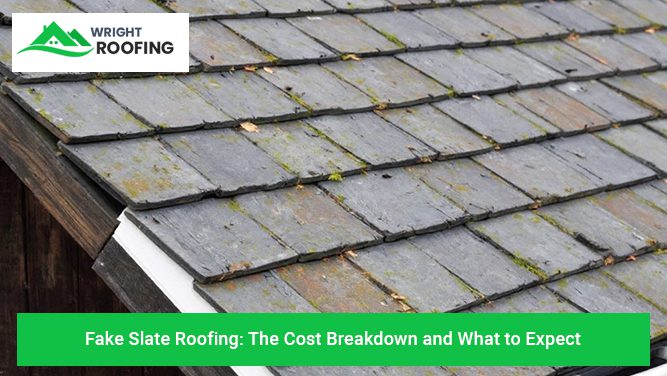Fake Slate Roofing: The Cost Breakdown and What to Expect
When considering roofing options, you might come across fake slate roofing. Fake slate roofing is made to look like natural slate but uses different materials. It is popular because it can be more affordable and lighter than natural slate. This guide will help you understand the costs and what to expect if you choose fake slate roofing.

Factors Affecting the Cost of Fake Slate Roofing
Several factors can influence the cost of fake slate roofing. Here are the main ones:
Material Costs
The price of fake slate tiles can vary. Some tiles are more affordable, while others might be pricier due to higher quality or brand reputation. It’s important to compare different options to find the best balance between cost and quality.
Roof Size
The size of your roof will impact the overall cost. Larger roofs require more materials and labor. To estimate the cost, you’ll need to measure your roof’s area in square feet.
Labor Costs
Labor costs can vary depending on your location and the complexity of the installation. Skilled contractors might charge more, but their expertise can ensure a better installation. Make sure to get quotes from several contractors to compare prices.
Roof Design Complexity
If your roof has steep slopes, multiple angles, or intricate designs, it can increase the cost. These features make the installation more challenging and time-consuming.
Additional Components
There are other components to consider, like underlayment, flashing, and fasteners. These materials help protect your roof and ensure a secure installation. Don’t forget about roof ventilation and insulation, which can also add to the cost.
Geographic Location
Costs can vary depending on where you live. Some regions have higher material and labor costs. It’s a good idea to research prices in your area to get an accurate estimate.
Permits and Inspections
Finally, don’t forget about permits and inspections. You might need to pay fees for building permits and inspections during the installation process. These costs can add up, so be sure to include them in your budget.
Average Cost Breakdown
On average, fake slate roofing can cost between $10 and $20 per square foot for materials and labor. This is generally less expensive than natural slate, which can cost $30 to $50 per square foot.
Here’s a rough budget range for different project sizes:
- Small Project (1,000 sq. ft.): $10,000 to $20,000
- Medium Project (2,000 sq. ft.): $20,000 to $40,000
- Large Project (3,000 sq. ft.): $30,000 to $60,000
These estimates include both materials and labor. Keep in mind that prices can vary based on the factors mentioned earlier.
Long-Term Considerations
When choosing fake slate roofing, think about the long-term costs and benefits. Here are some key points to consider:
Maintenance Costs
Fake slate roofing typically requires less maintenance than natural slate. It’s easier to clean and less likely to crack or chip. This can save you money on repairs over the years.
Lifespan and Durability
While natural slate can last over 100 years, fake slate usually lasts between 30 and 50 years. This is still a long time, but it’s something to keep in mind when making your decision.
Energy Efficiency
Fake slate roofing can be energy-efficient. It can help keep your home cooler in the summer and warmer in the winter. This can reduce your energy bills and make your home more comfortable.
Resale Value and Aesthetic Appeal
A new roof can boost your home’s resale value. Fake slate roofing looks attractive and can improve your home’s curb appeal. Potential buyers might appreciate the modern look and lower maintenance requirements.
Pros and Cons of Fake Slate Roofing

Here are some of the main pros and cons of fake slate roofing:
Pros:
- Lower Cost: Fake slate is generally cheaper than natural slate.
- Lighter Weight: It’s lighter, which reduces structural concerns for your home.
- Variety of Styles: There are many styles and colors to choose from.
Cons:
- Shorter Lifespan: It may not last as long as natural slate.
- Potential Fading: Over time, the color might fade or show signs of damage.
- Limited Recycling: Fake slate isn’t as easily recyclable as natural slate.
Fake slate roofing offers a cost-effective and attractive alternative to natural slate. It has several benefits, like lower cost and easier installation. However, it’s important to consider factors like durability and maintenance costs. By weighing the pros and cons, you can make an informed decision about whether fake slate roofing is right for you. Remember to research brands, read reviews, and choose a reputable contractor to ensure a successful installation.